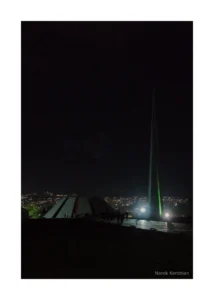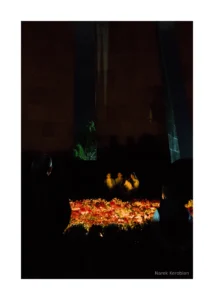On April 24, 1915, by the orders of the Ottoman Minister of Interior Talaat Pasha, the police of Constantinople arrested and deported approximately 300 Armenian intellectuals, signifying the beginning of the thoroughly planned and executed stage of the Armenian Genocide. Within the span of two years, an estimated 1,500,000 Armenians were systematically killed, marched into their deaths in Syrian deserts, or deported from their homeland.
Today, 110 years later, the wounds from these atrocities remain open in the collective minds of the Armenians, as despite countless evidences, the Turkish government to this day denies it as genocide and fails to accept responsibility.
To commemorate the victims of the genocide, every year on April 24, hundreds of thousands of Armenians from around the world visit the Armenian Genocide Memorial Complex in Yerevan and lay flowers at the eternal flame.
The monument was constructed between 1966 and 1967 and includes a 44-meter stela symbolizing rebirth as well as an eternal flame dedicated to the victims. It is located at the center of twelve stone slabs, which are arranged in a circular fashion and represent the twelve lost provinces. In 1995, a museum-institute was built nearby with the goal of studying and preventing genocides.
Below are some photos I took during my visit to the Armenian Genocide Memorial Complex on April 27.



